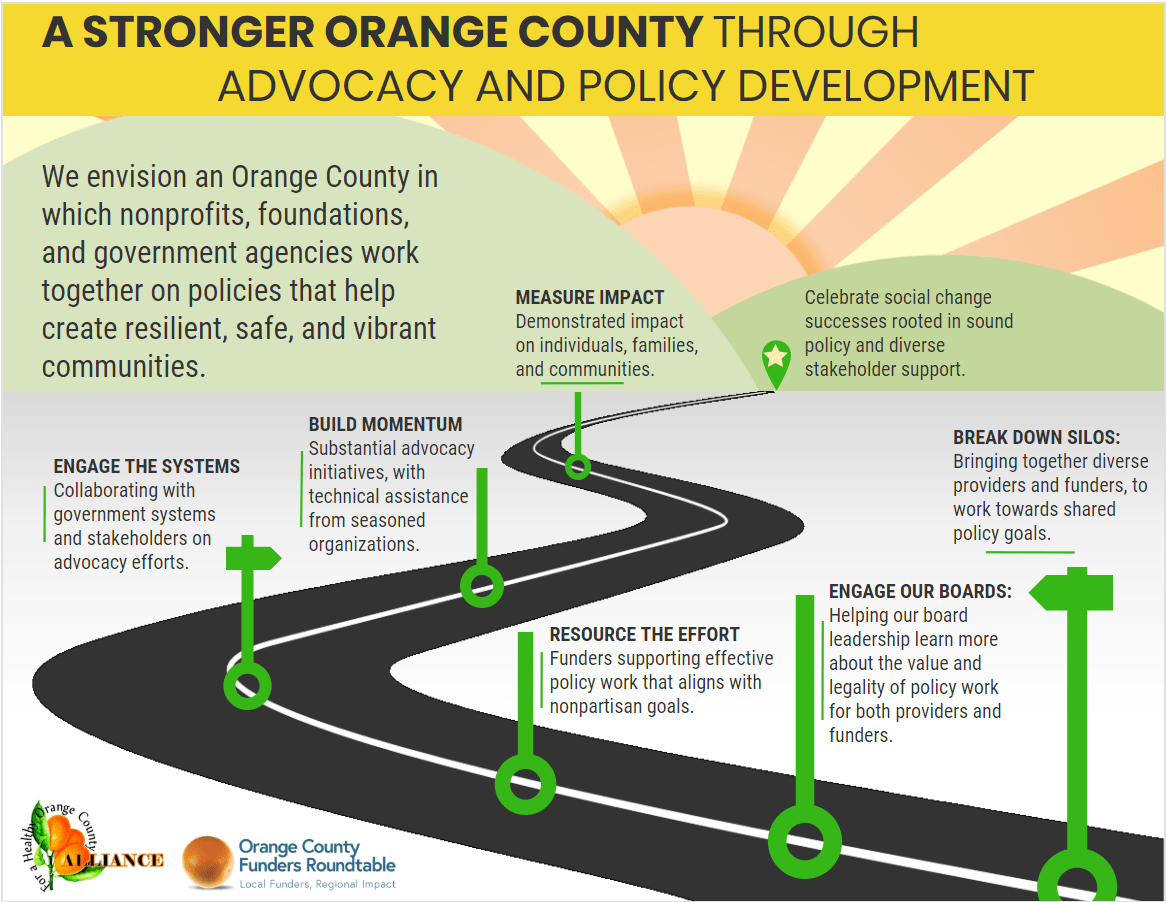The ability of Orange County nonprofits to move policy forward is often hindered by the region’s fragmented governance structure, disconnect between cities, and a polarized politic, according to a March discussion among more than 24 nonprofits and their funders.
The resulting report, "Connecting the Dots: A Discussion of the Structural Realities of Policy and Advocacy Efforts in Orange County," offers some solutions on how these barriers could be overcome. But the discussion itself was more focused on how the nonprofits and funders could build a shared understanding of the barriers they face and find ways to better collaborate on influencing good policy in the county.
"In this fragmented system of government, nonprofits and foundations must play a critical role in helping community leaders understand the impact of their decisions and reminding the community of shared values and beliefs," the report said.
Alliance for a Healthy Orange County and Orange County Funders Roundtable, which convened the meeting, invited representatives from legal, transportation, health, housing and LGBTQ groups. They included Santa Ana Building Healthy Communities, a project of the California Endowment, Sisters of St Joseph Healthcare Foundation, American Civil Liberties Union, Hoag Health Foundation, OC Women's Health Project, Safe Routes to School, and United Way Orange County, to name a few.
Untangling the knot of Orange County's governance structure is as good a place to start as any. The report points out that Orange County contains 34 cities and multiple unincorporated areas, as well as 28 separate school districts, yet it has no dominant governmental hub overseeing those areas. Aside from Santa Ana and Anaheim, the only two cities with a population over 300,000, other cities' population can range from the 10,000s to 100,000, and are mostly similar in spatial size.
As a result, policy work at the municipal level requires nonprofits to get to know and build relationships with a varying range of stakeholders. Yet this could also lead to duplicating efforts, the report said.
The fragmentation in Orange County is made worse by a deep disconnect between governmental bodies. One recent example was the growing population of homeless residents on the Santa Ana Riverbed. Only after a lawsuit was brought against multiple cities and the County did local governments begin coordinating more fully on the removal and relocation of the riverbed residents.
In addition, Orange County is significantly polarized politically, so many policy issues can quickly become controversial. In 2016, Santa Ana, the city with the second largest population in the county, was the first to become a sanctuary city, which limits coordination between the local police and federal immigration authorities. But earlier this year in Los Alamitos, a city with just over 11,000 people and the county's second-least populous city, the city council passed an ordinance to exempt itself from S.B. 54, the California Values Act--also known as the sanctuary state bill--which orders local and state law enforcement agencies to limit their coordination with immigration enforcement. The Orange County Board of Supervisors followed suit by agreeing to join the Trump administration's lawsuit against the sanctuary state law.
Since the cities, county, and state governments often disagree on issues and their resolutions, it is difficult to find consensus or even solutions that can work in large parts of the county. The example of the riverbed homeless residents shows this clearly: finding or building short-term and long-term shelter has been bogged down in controversy throughout the County. Proposed housing in Irvine, Laguna Niguel, and Huntington Beach was canceled amid community protests, and attempts to create a regional homeless board has gone nowhere. This shortage of new shelter has led homeless residents who were relocated temporarily to motels to go back on the street and stretch thin the already limited shelter services.






